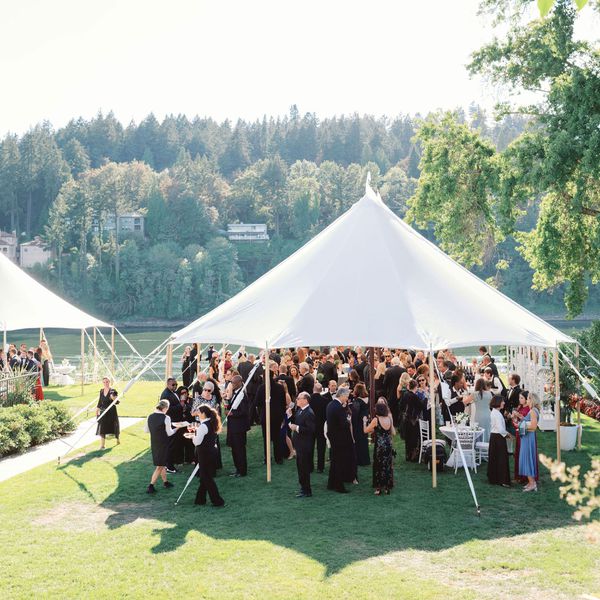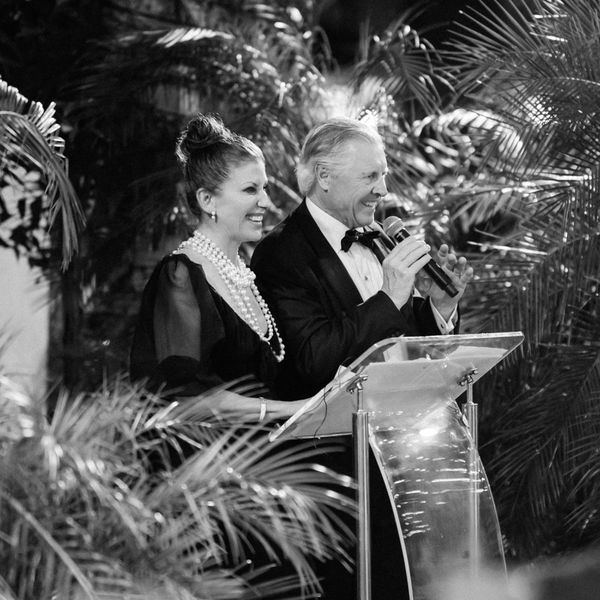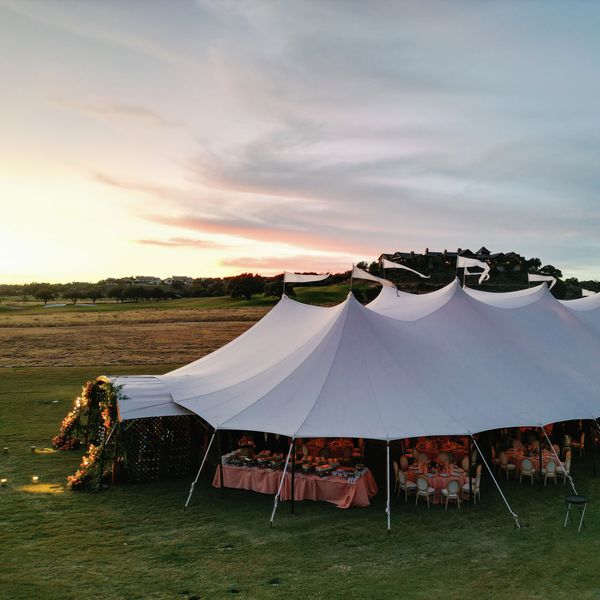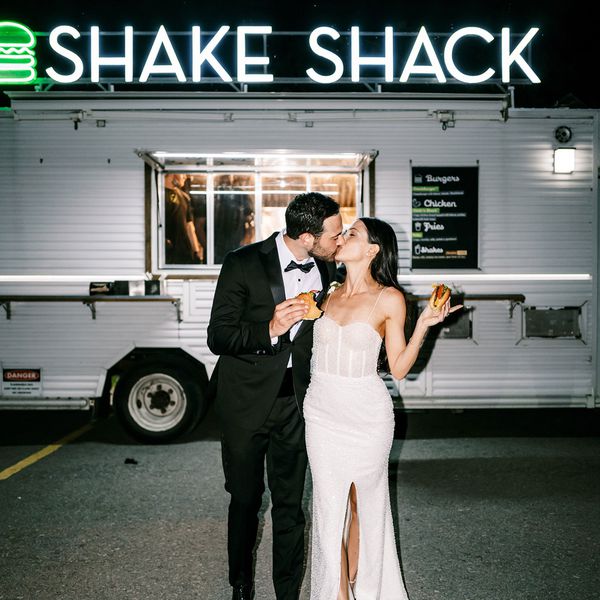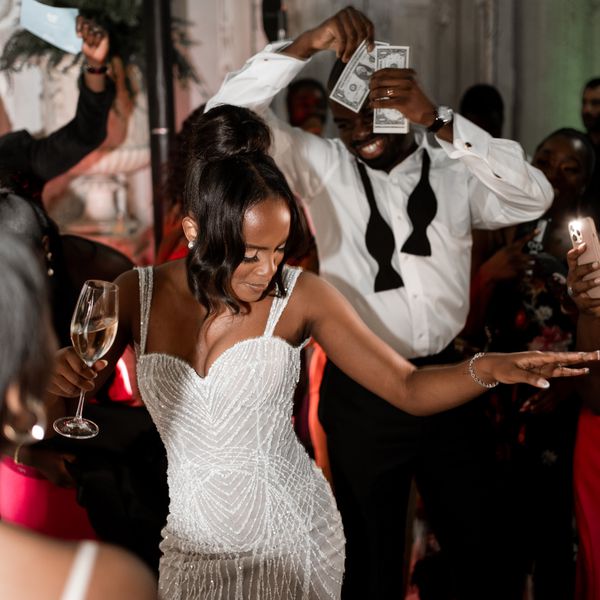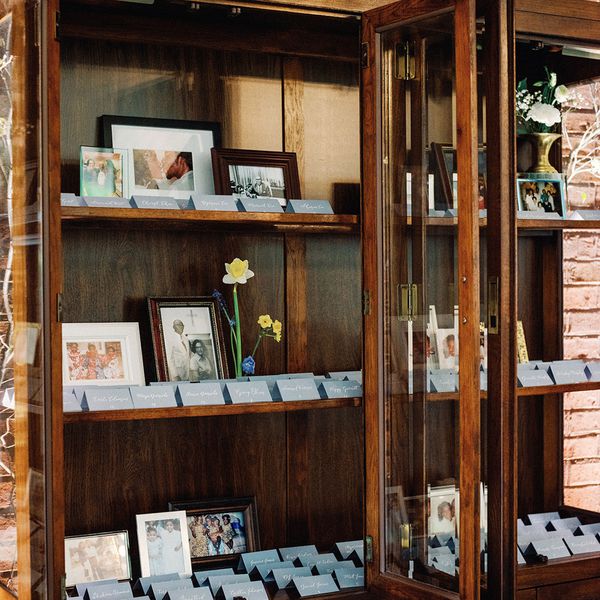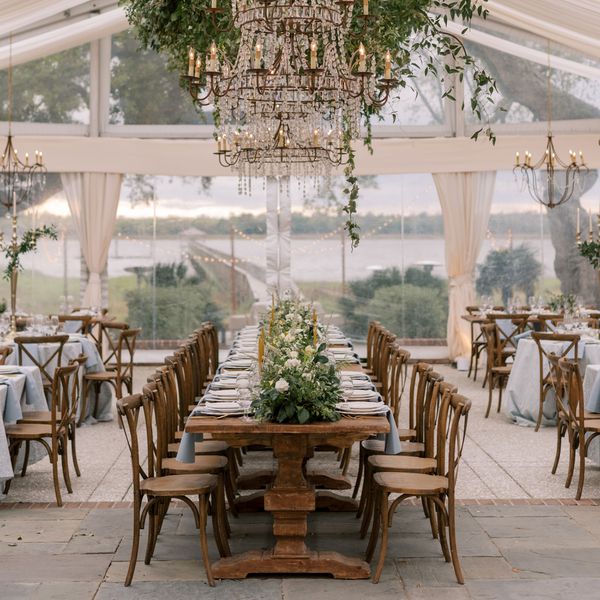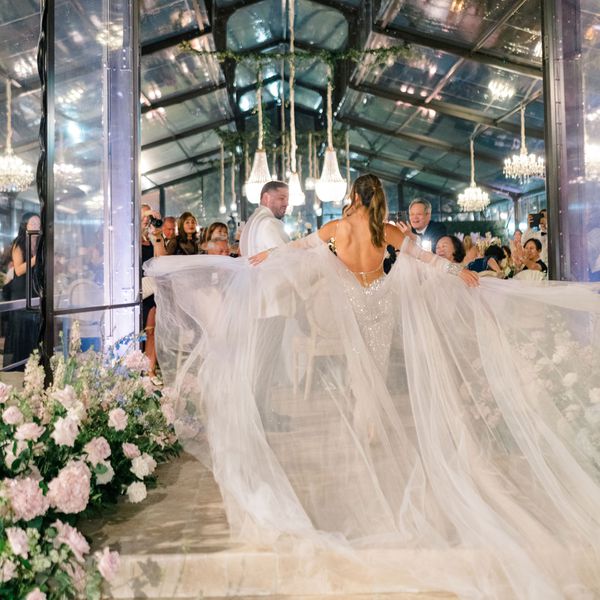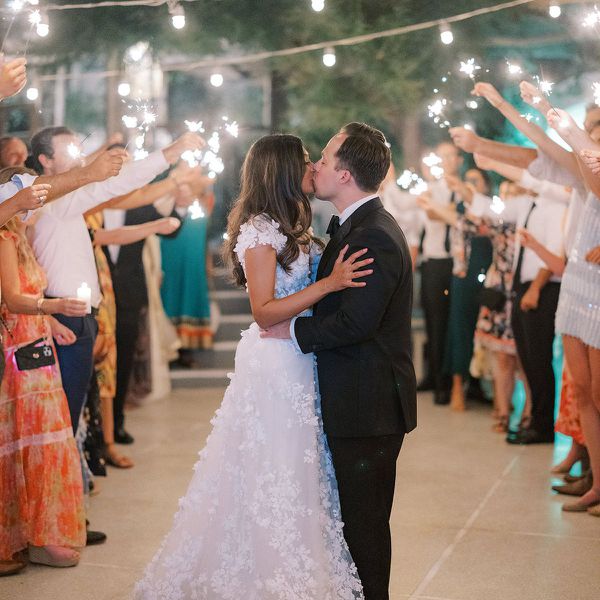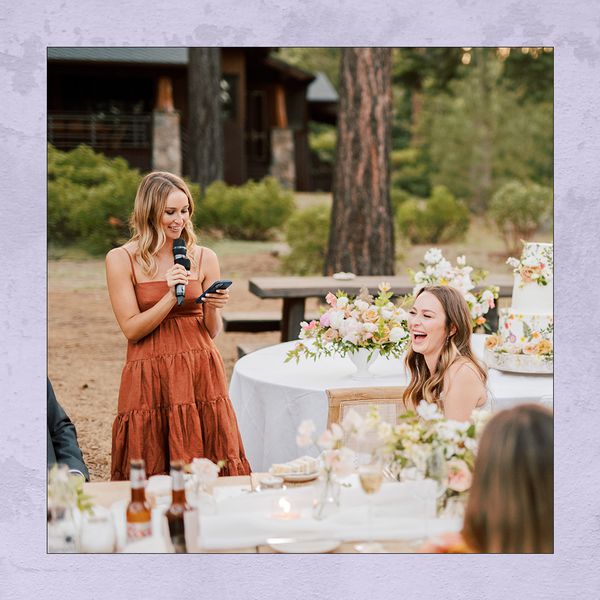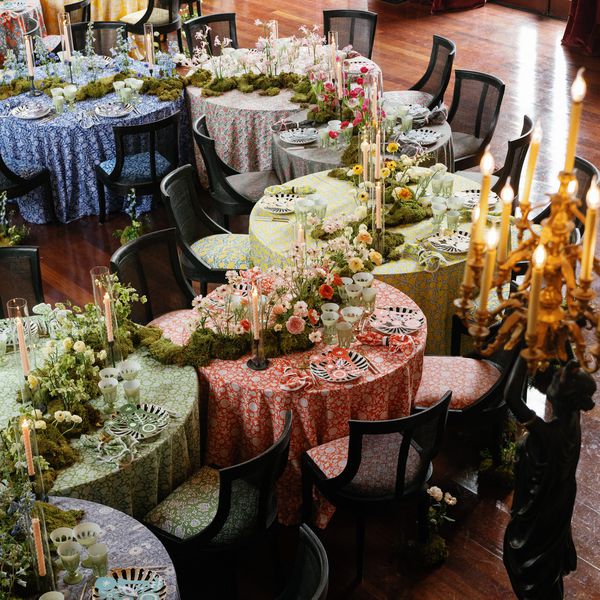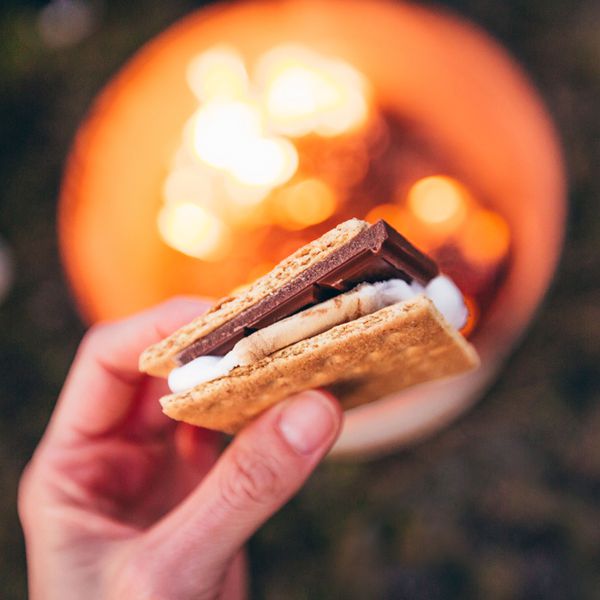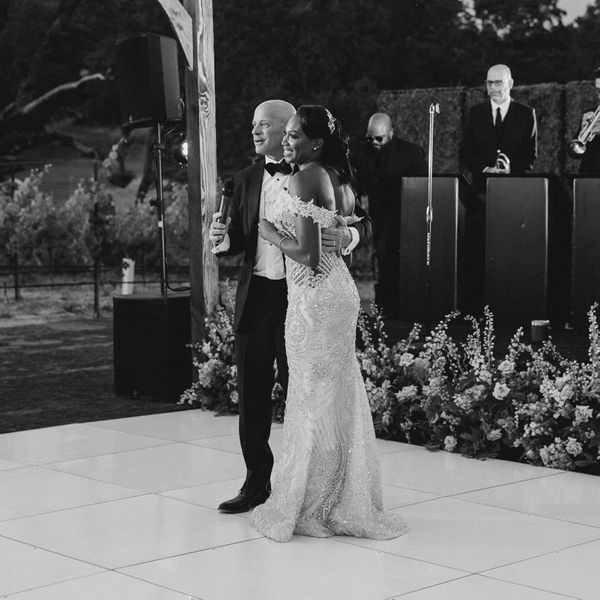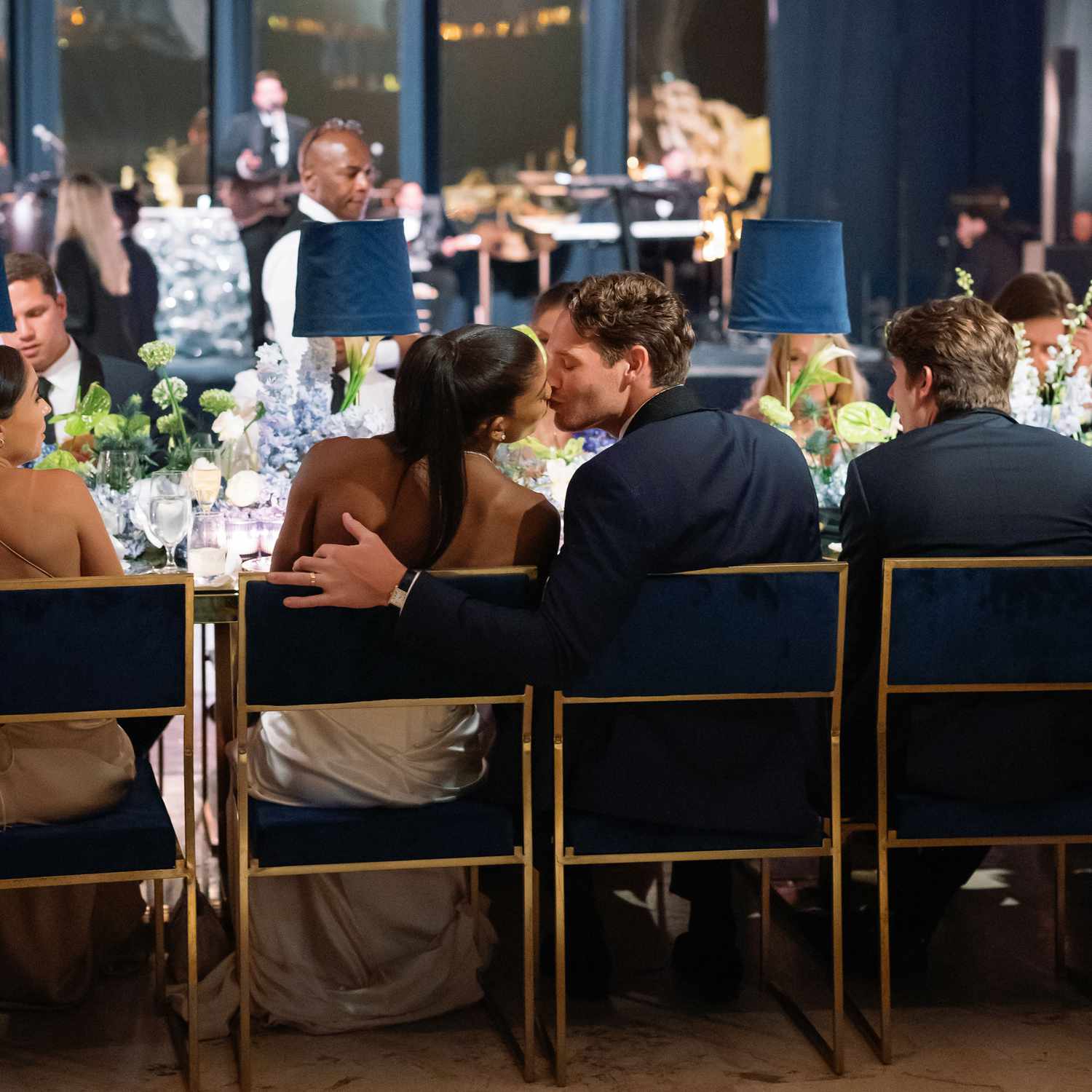
Photo by Erika Delgado Photography
Every wedding reception is different. You may gravitate toward a grand dinner paired with an epic dance party or an extended cocktail hour that transitions into a slate of themed activities. However, regardless of what you choose to include in your big day, all post-nuptial celebrations share one thing in common: a structured wedding reception timeline. And while it may not sound romantic, a detailed “run of show” is a logistical necessity.
The standard wedding reception is composed of a one-hour cocktail party and a four-hour reception with a dinner service. That being said, there’s still plenty of flexibility to make it your own. Who you are as a couple, what you value, where to plan to hold your celebration, and the size of your guest list all play an important role in how your night unfolds. The key here is to customize a timeline that makes sense within those parameters. While there’s no one-size-fits-all schedule for weddings, we spoke with experts from all over the country to weigh in on a basic framework that works for just about any couple.
Meet the Expert
- Camille Ross is a wedding planner and the owner of Elsie Event Co.
- Lizzy Liz Chan is a wedding planner and designer at Lizzy Liz Events.
- Lola Akingbade is the lead designer and planner at MasterPlan Events.
- Renae Ouellette is the former director of catering and events for Conrad Washington, D.C.
Here, industry experts share an hour-by-hour rundown of the ultimate wedding reception timeline.
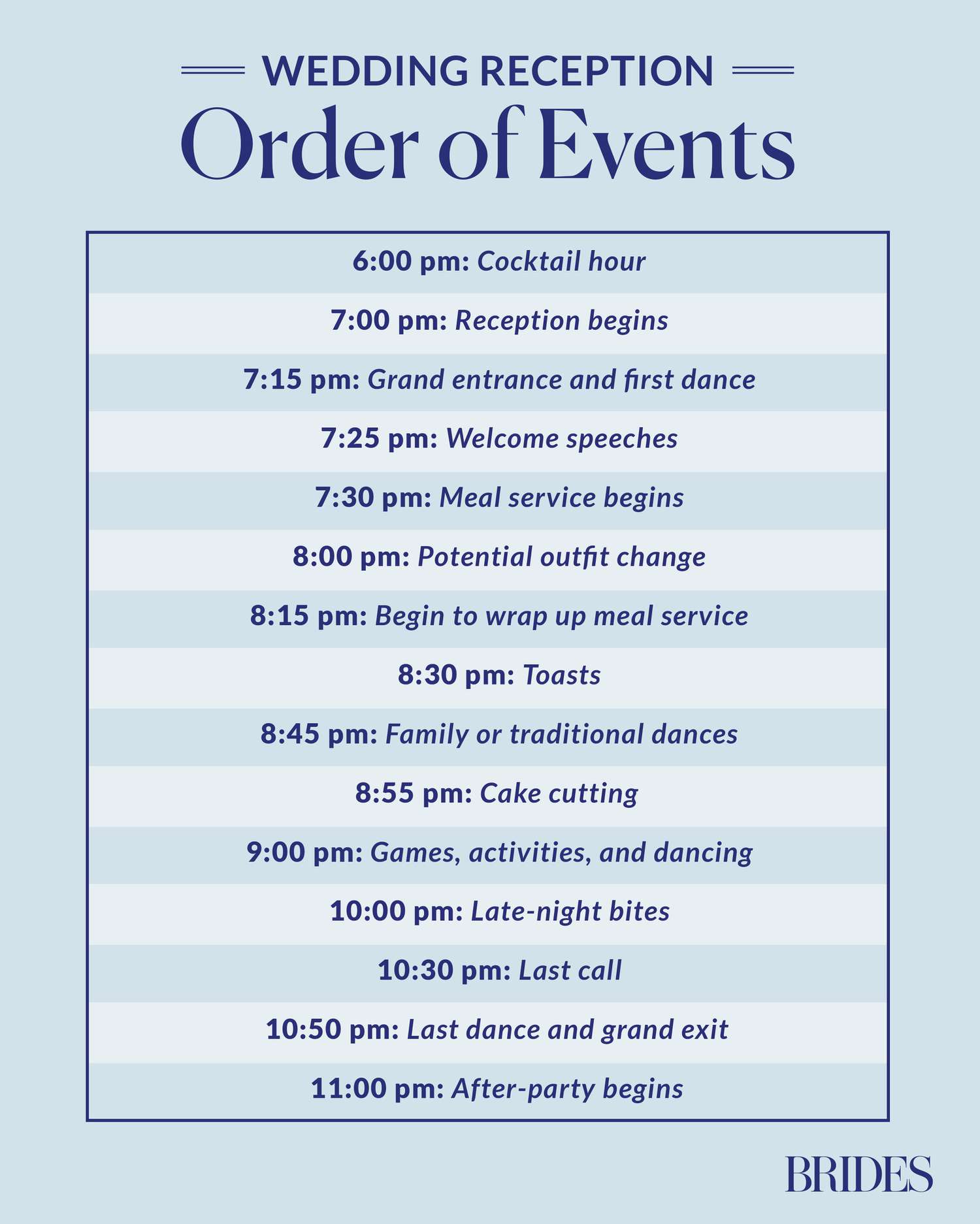
Design by Brides
Cocktail Hour
First things first: Cocktail hour! Here's how to break down this initial portion of the reception.
Official Greeting
Nervous about having enough time to enjoy your cocktail hour? Consider completing all of your wedding party and family photos before your ceremony, says Lizzy Liz Chan, wedding planner and designer at Lizzy Liz Events. By doing so, you'll get to enjoy conversations, drinks, and hors d’oeuvres during your cocktail hour—and be able to properly welcome your guests.
For evening weddings, Chan recommends that you try to sneak away during cocktail hour and enjoy a quick bite together. This way you can also pop out of the reception for sunset photos— without missing your meal.
Photos With Guests
While you likely have all of the "big" photos behind you (think: first look, wedding party, family), cocktail hour is a great time to snap more casual and candid photos with your guests.
:max_bytes(150000):strip_icc()/LN_Weddingday_1635-4574b114a4c543f7930584ac56821ec4.jpg)
Photo by Adovasio Photography Studio
Reception Hour One
The first hour of your wedding reception will include a lot of the formalities typically associated with your big day, such as your grand entrance and first dance. Additionally, if you have a time limit with your photographer or videographer, make sure that they're able to capture your desired moments in the first hours of your celebration.
The Grand Entrance
At the beginning of your reception, your parents, your bridal party, and you and your partner are introduced. In traditional American weddings, this process may take five to 10 minutes, depending on the size of the party. However, for other traditions and cultures, these introductions may take a bit longer. “In a Nigerian wedding, this process takes much longer; anywhere between 15 and 30 minutes, as they are dancing in and when they get to the dance floor, ‘money spraying’ also takes place," says Lola Akingbade, a wedding designer and planner.
The First Dance
Following your grand entrance, you'll typically move directly into your first dance. “This allows the couple to have ‘something to do’ once they have been introduced,” says Camille Ross, wedding planner and owner of Elsie Event Co. However, make sure to wait until later in the night for any parent-child or family dances, “Save the parent dances for later as a way to organically kick up the dance floor post-dinner," she says.
Welcome Speeches and/or Meal Blessing
Following the first dance, your or your partner's parents may give a brief welcome speech or blessing before dinner service stars. “The officiant prayer is a way to keep guests at their seats, and the [catering] team can use it as a cue to begin service,” Ross says. “It's also very common in any wedding where the couple and their families are religious.”
Start of Meal Service
While food served during cocktail hour should satisfy any particularly hungry guests, it's important to start your meal service as promptly as possible in order to make sure your guests are occupied—and well-fed—before the dance floor opens.
:max_bytes(150000):strip_icc()/claudia-hank-la-foce-wedding-1120-6506af8a28534bc9b46e3d1cfacf611a.jpg)
Photo by Elisabetta Marzetti
Reception Hour Two
As you head into the second hour of your reception, here's what you can plan for:
Potential Outfit Change
It’s common for modern brides to switch up their look for the reception. Take the opportunity as dinner winds down to slip into something more comfortable before dancing the night away. Alternatively, couples may change into (or out of) traditional cultural outfits at this point.
Depending on how intricate your wedding ensemble is, Chan says you may have to factor in time for outfit changes as well. “Keep in mind, some Brides will have their MUAH [makeup and hair] artist onsite to do different hair changes and makeup touch-ups, so factor in glam time too!”
End of Meal Service
To keep the momentum going, Akingbade recommends promptly moving onto the next item on the program once the last plate has been served: either toasts or family dances. By this point, the majority of your guests should be done eating.
Toasts
While you may know the time estimates of each of your toasts, consider including some buffers (of roughly 10 to 15 minutes) in case any of your speakers run long. Additionally, make sure to give a time limit beforehand to any toast-givers to ensure they're able to write a speech of the right length.
Family Dances
Family dances, such as the mother/son dance or father/daughter dance, are a great way to transition into the open dance floor since the couple is already on or near the floor. “Keep in mind, wherever the couple goes, people go,” Chan says. “So if you want to have your guests dance all night, then you need to be on the dance floor dancing ALL night too!”
Traditional Dances
Some large cultural weddings feature traditional dances or musical pieces. Allot time for these traditions accordingly. “Be sure to be deliberate about scheduling these within the reception time frame,” says Renae Ouellette, the former director of catering and events for Conrad Washington, D.C.. “Ideally this would be before cake cutting so that the photographer is still present to capture the moment, but it ultimately depends on the couple and the tradition.”
Cake Cutting
Take a break from the dance floor with your cake cutting. Keep in mind that traditional wedding etiquette dictates that it’s acceptable to leave a wedding once the cake has been cut, so this formality is best placed after all the other key moments of the evening.
:max_bytes(150000):strip_icc()/1086-MARISSA_HERB_SUBMISSION-d8819964f9cc4bb7916515660bd54b23.jpg)
Photo by Catherine Guidry
Reception Hour Three
Hour three of your reception is when the celebration really kicks off on the dance floor. Ahead, learn how to break down this portion of the evening.
Games and Activities
If you want to include any traditional games in your celebration, such as a garter or bouquet toss, this is when they would take place. However, don't feel as though you need to limit any additional fun to hour three. You can also opt to include other interactive reception games and activities, such as a photo booth, trivia, or a crossword, throughout the evening.
Dancing
Regardless of whether you're "team band" or "team DJ," this is the time in the night when your guests can flock to the dance floor. (Unsure of what songs to request? Refer to some of our ultimate playlists for inspiration.)
:max_bytes(150000):strip_icc()/Caroline_Lima_Photography_Siratt_Wedding_2021_125-be1c90b07f7a4e90b5223c688bcea7ab.jpg)
Photo by Caroline Lima Photography
Reception Hour Four
As your celebration reaches its final hour, here's what you can plan for your guests:
Late-Night Bites
Concerned about hungry guests? Consider integrating late-night bites into the final hour of your reception to ensure your friends and family can refuel after dancing all night. Pass around some small snacks or hire a food truck to make an appearance.
Last Call
It's the universal signal that things are winding down: last call. While you don't have to make it official, consider using it as a sign to your guests to start wrapping up—particularly if your venue has a sharp end time.
Last Dance and Grand Exit
If you’re planning a dramatic departure, Ross says to consider doing it during the last ten minutes of your evening. While you may opt for a light-filled exit (think: fireworks or sparklers), you can also choose to have a more subdued, intimate moment, such as a private last dance.
:max_bytes(150000):strip_icc()/Screenshot2023-06-21at3.20.59PM-45fa1292403c45f0af5a076f343d5e38.png)
PHOTO BY THE BOLD AMERICANA
Bonus Hour
This "bonus hour" period encompasses anything that happens after the official reception.
The After-Party
After attending a ceremony, cocktail hour, and reception, know that most wedding guests are usually tapped out. However, there are always a few folks ready to keep the party going. The easiest way to flow into the after-party is to simply pick a bar or venue nearby ahead of time, spread the word, and (continue to!) dance and celebrate.

